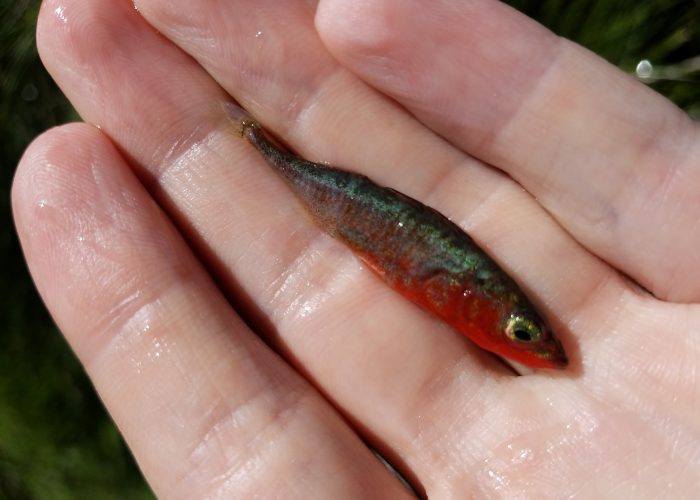WHY STICKLEBACK?
Credit: Brian Stauffer

“As a boy, I had two small aquaria in our backyard in which I watched, each spring, the nest building and other fascinating behaviours of sticklebacks.”
– NIKOLAAS TINBERGEN
Threespined sticklebacks (Gasterosteus aculeatus) are small fish that have proven to be a powerful model system for identifying the genetic mechanisms that underlie adaptive morphological evolution. But sticklebacks are also famous for their rich behavioral repertoire, which has attracted the attention of biologists since the days of the early ethologists, including Nobel Prize-winner Niko Tinbergen. For example, male sticklebacks aggressively defend nesting territories and are the sole providers of parental care that is necessary for offspring survival. Some individual sticklebacks are more willing to take risks than others, and the way an individual stickleback behaves toward competitors, predators, mates and offspring directly influences fitness and has a heritable component.

Many of the axes of natural behavioral variation studied in sticklebacks have parallels with human behavioral variation, e.g. risk taking behavior, sensation seeking, extraversion and aggressiveness. Moreover, the system is tractable: sticklebacks can be readily drawn from the wild and measured in reliable behavioral assays, large sample sizes are feasible and they can be crossed and reared in the lab. In other words, sticklebacks have many of the advantages of traditional model organisms with the added advantage that we can study them in a wild state.
